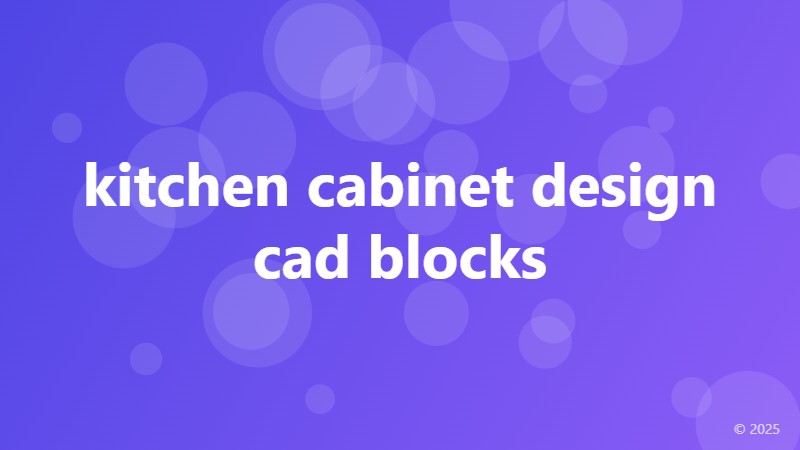kitchen cabinet design cad blocks

Unlocking the Potential of Kitchen Cabinet Design with CAD Blocks
When it comes to designing a kitchen, one of the most crucial elements is the cabinet design. A well-planned cabinet layout can make a significant difference in the overall aesthetic and functionality of the kitchen. With the advent of technology, designers and architects can now utilize Computer-Aided Design (CAD) blocks to create stunning kitchen cabinet designs. In this article, we'll delve into the world of kitchen cabinet design CAD blocks and explore their benefits, types, and best practices.
What are CAD Blocks?
CAD blocks are pre-made designs or symbols that can be used to create 2D or 3D models in CAD software. These blocks can be thought of as building blocks that can be combined to create complex designs. In the context of kitchen cabinet design, CAD blocks can be used to create custom cabinet layouts, including doors, drawers, shelves, and other components.
Benefits of Using CAD Blocks for Kitchen Cabinet Design
Using CAD blocks for kitchen cabinet design offers several benefits, including:
• Time-Saving: CAD blocks can save designers a significant amount of time by providing pre-made designs that can be easily customized.
• Increased Accuracy: CAD blocks ensure accuracy and consistency in design, reducing the risk of errors and mistakes.
• Improved Collaboration: CAD blocks can be easily shared among designers and stakeholders, facilitating collaboration and communication.
• Enhanced Creativity: With a vast library of CAD blocks, designers can experiment with different designs and layouts, leading to more innovative and creative solutions.
Types of CAD Blocks for Kitchen Cabinet Design
There are various types of CAD blocks available for kitchen cabinet design, including:
• Standard Blocks: These are pre-made blocks that conform to standard kitchen cabinet sizes and configurations.
• Custom Blocks: These are bespoke blocks created to meet specific design requirements or client preferences.
• Dynamic Blocks: These blocks can be modified and customized to fit different design scenarios.
Best Practices for Using CAD Blocks in Kitchen Cabinet Design
To get the most out of CAD blocks, designers should follow these best practices:
• Organize Your Blocks: Keep your CAD block library organized and easily accessible to ensure efficient design workflow.
• Use Consistent Naming Conventions: Use consistent naming conventions to ensure that blocks can be easily identified and retrieved.
• Customize and Adapt: Don't be afraid to customize and adapt CAD blocks to fit specific design requirements or client preferences.
By harnessing the power of CAD blocks, designers and architects can create stunning kitchen cabinet designs that are both functional and aesthetically pleasing. With their benefits, types, and best practices, CAD blocks are an essential tool for anyone looking to take their kitchen design to the next level.